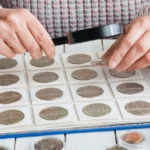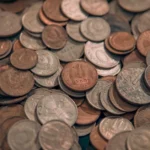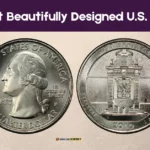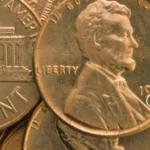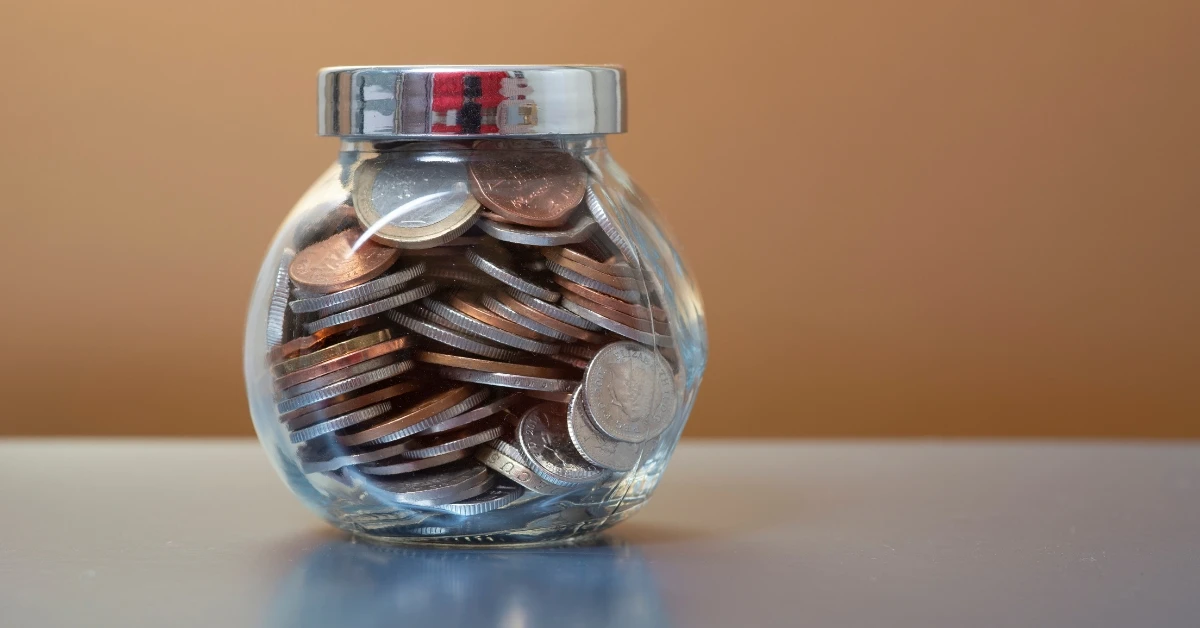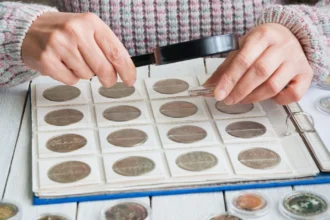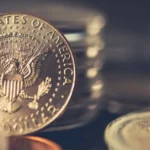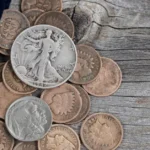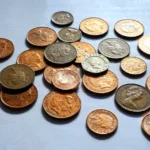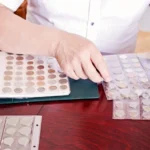Discover the top 10 coin storage solutions for collectors, from albums and flips to airtight holders and vault boxes. Learn how to protect and preserve your treasured coins.
Coin collecting is more than just a hobby; it’s a rewarding journey into history, art, and culture. Whether you’re a seasoned collector or just starting out, your collection holds both sentimental and monetary value. Proper storage is crucial to preserving the condition and value of your coins over time.
Without the right storage solutions, coins can tarnish, corrode, or become damaged due to environmental factors or improper handling. By investing in the right tools, you not only protect your collection but also ensure its beauty and worth are maintained for years to come.
This guide will provide you with the top 10 storage options tailored to collectors of all levels. Whether you’re organizing a small collection or safeguarding rare, high-value coins, you’ll find the perfect solution to meet your needs.
Why Proper Coin Storage Matters
Storing coins properly is more than just keeping them organized—it’s about safeguarding their condition and value. Improper storage can expose coins to a variety of risks that may permanently damage their appearance and decrease their worth.
Common Risks of Improper Storage
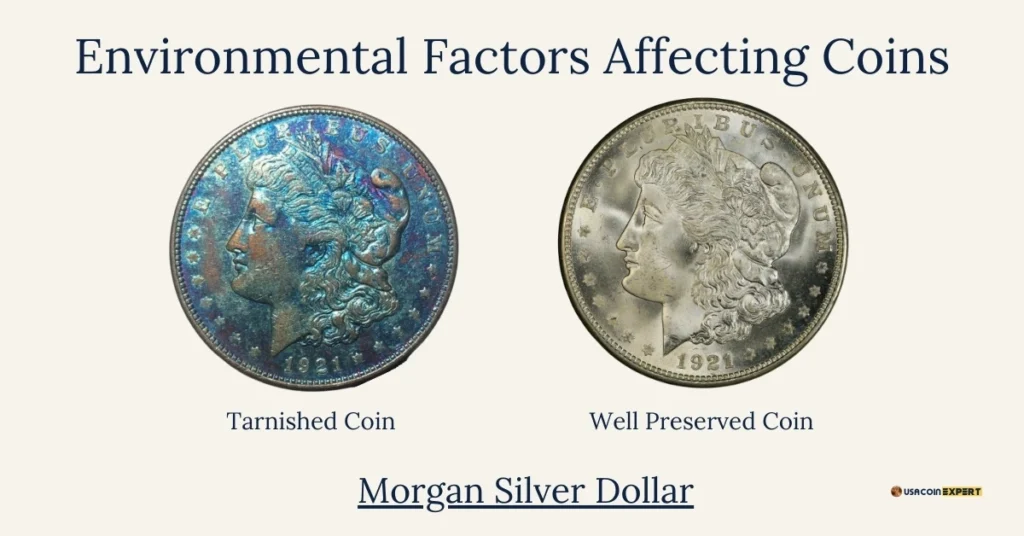
- Tarnishing: Coins, especially those made of silver or copper, can discolor when exposed to air and moisture. This tarnishing (or oxidation) can dull their shine and obscure their details.
- Corrosion: Humid environments can lead to corrosion, particularly in coins made from reactive metals like bronze or zinc. Once corroded, a coin’s surface and design can become irreversibly damaged.
- Scratches: Storing coins loosely or handling them without care often results in scratches or nicks, which significantly impact their grade and value.
- Loss of Value: Damaged coins lose their appeal to collectors and investors. Even a minor flaw can drastically reduce a coin’s market value.
Environmental Factors That Impact Coins
Coins are sensitive to their surroundings, and environmental factors play a significant role in their preservation:
- Humidity: Excess moisture in the air accelerates oxidation and corrosion.
- Temperature: Fluctuating temperatures can lead to condensation inside storage containers, creating ideal conditions for tarnish and corrosion.
- Handling: Touching coins with bare hands transfers oils and dirt to their surface, which can lead to stains or fingerprints.
The Importance of Proper Storage
Proper coin storage isn’t just about avoiding damage—it’s an investment in the future value of your collection. High-quality storage solutions protect coins from environmental threats, minimize the need for handling, and ensure they remain in pristine condition. By choosing the right storage, you can maintain your collection’s long-term appeal and safeguard its worth for future generations.
Key Factors to Consider in Choosing the Best Coin Storage Solutions
When selecting a coin storage solution, it’s essential to consider factors that ensure your collection’s safety, accessibility, and long-term preservation. Below are the key points to guide your decision-making process.
1. Material Safety: Why PVC-Free Materials Are Crucial
The material used in your coin storage can have a direct impact on the condition of your coins. Many inexpensive storage options contain PVC (polyvinyl chloride), which releases chemicals over time. These chemicals can interact with the coin’s surface, causing a sticky residue or greenish film known as “PVC damage.”
- Solution: Opt for PVC-free materials such as archival-quality Mylar, acid-free paper, or inert plastics. These materials are chemically stable and safe for long-term storage.
2. Climate Protection: Importance of Moisture and Air Control
Coins are highly susceptible to environmental factors such as humidity and air exposure, which can lead to tarnishing and corrosion. Storing your coins in an uncontrolled environment increases the risk of damage.
- Solution: Choose airtight storage options like coin capsules, vacuum-sealed bags, or containers with built-in moisture control. For larger storage spaces, include silica gel packs to absorb excess moisture.
3. Accessibility: Balancing Convenience with Security
While it’s important to protect your coins, you’ll also want a storage solution that allows for easy access and organization. Overly secure storage can become inconvenient, while overly accessible solutions may compromise security.
- Solution: For valuable or rare coins, consider using lockable cases or safe deposit boxes. For everyday collections, coin albums or folders offer both accessibility and basic protection.
4. Display vs. Bulk Storage: Choosing Based on Your Collection Type
The way you store your coins should align with the type of collection you have. Display-worthy coins, such as rare or graded pieces, require individualized attention, while bulk coins like common currencies or bullion need space-efficient storage.
- Solution:
- For display: Use coin albums, display chests, or graded slab holders.
- For bulk storage: Opt for coin tubes or drawers that can accommodate multiple coins in an organized fashion.
5. Budget: Options for Every Price Range
Storage solutions vary widely in cost, from affordable cardboard holders to premium-grade vaults. While it’s tempting to choose the cheapest option, compromising on quality can lead to costly damage over time.
- Solution:
- Low Budget: Coin folders, 2×2 holders, or basic flips.
- Mid-Range: Coin albums, airtight capsules, or display boxes.
- High Budget: Wooden cabinets, custom coin chests, or safe deposit boxes for maximum security.
The 10 Best Coin Storage Solutions for Collectors (with Detailed Coin Recommendations)
Storing coins isn’t just about keeping them safe; it’s about preserving their condition, organizing them efficiently, and showcasing their beauty. Below, we dive into the top 10 coin storage options, with detailed explanations of their benefits and the types of coins they’re best suited for.
1. Coin Albums
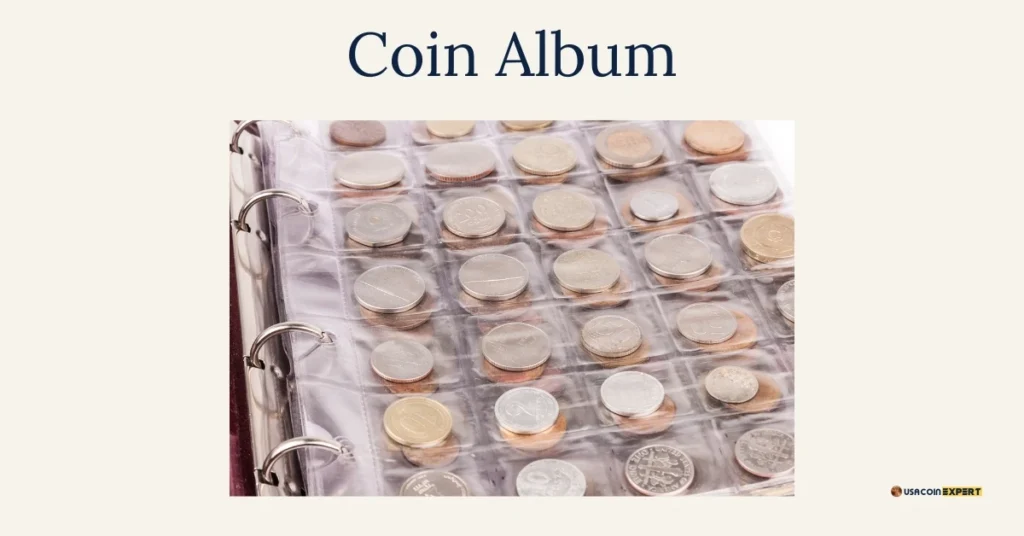
Coin albums are book-like storage solutions with transparent plastic slots for individual coins. They allow collectors to organize and display their coins in a visually appealing format.
- Why It’s Great:
- Protects coins from scratches and light handling.
- Organizes coins by date, mint mark, or theme.
- Provides an attractive and easy-to-browse display.
- Best For:
- U.S. State Quarters: Showcase the complete 50-state collection.
- Lincoln Cents: Organize pennies by year and mint mark.
- Commemorative Coin Series: Display thematic collections in a cohesive layout.
Coin FoldersCoin Folders2. Coin Folders
Coin folders are affordable and lightweight storage options, often made from sturdy cardboard. They include pre-cut slots for specific coin types, labeled by year and mint mark.
- Why It’s Great:
- Cost-effective and beginner-friendly.
- Perfect for starting a thematic collection.
- Provides an easy way to track your collection progress.
- Best For:
- Jefferson Nickels: Organize nickels by year and mint mark.
- Roosevelt Dimes: Affordable for low-value or bulk coin collections.
- Modern Penny Collections: Great for kids or entry-level collectors.
3. 2×2 Coin Holders
2×2 holders are cardboard squares with transparent Mylar windows that fold over the coin. The holder is stapled or taped shut, offering individual protection for each coin.
- Why It’s Great:
- Inexpensive and versatile for all types of coins.
- Easy to label for identification and cataloging.
- Can be stored in boxes or binders for better organization.
- Best For:
- Morgan Silver Dollars: Protects their large and detailed surfaces.
- Indian Head Pennies: Preserves historical coins safely.
- World Coins: Useful for coins of varying sizes.
4. Coin Flips (Plastic or Mylar)
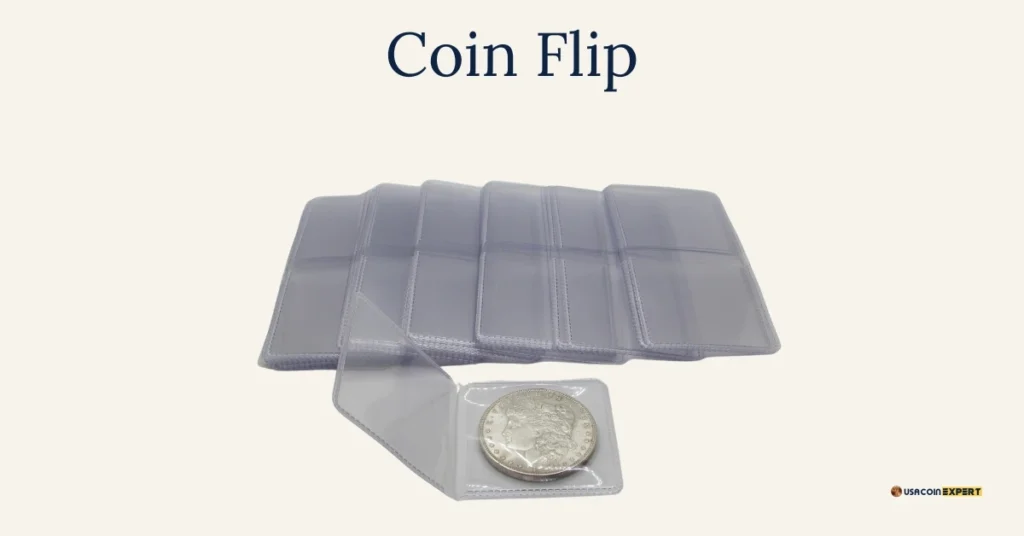
Coin flips are flexible, lightweight holders that include a pocket for the coin and another for a label. Non-PVC flips are safe for long-term storage.
- Why It’s Great:
- Transparent for easy viewing.
- Lightweight and portable for traveling or trading.
- Non-PVC options are archival-safe.
- Best For:
- Bullion Coins (e.g., Silver Eagles): Safeguard their shine and weight.
- Proof Coins: Perfect for showcasing at trade shows.
- Foreign Coins: Versatile for coins with unique dimensions.
5. Air-Tite Coin Holders
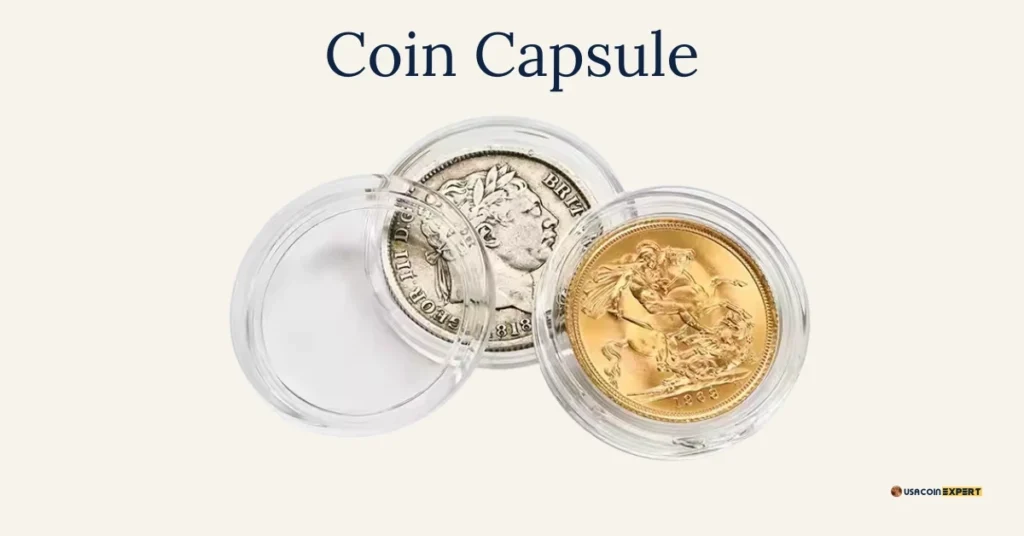
Air-Tite holders are rigid plastic capsules designed to provide airtight protection for individual coins. They completely seal the coin, preventing exposure to air, moisture, or dust.
- Why It’s Great:
- Premium protection for rare or valuable coins.
- Enhances presentation with a sleek, polished look.
- Available in various sizes for different coin types.
- Best For:
- Gold Sovereigns: Ensures protection against tarnish.
- Silver American Eagles: Preserves their brilliance and details.
- High-Grade Ancient Coins: Keeps fragile coins intact.
6. Coin Tubes
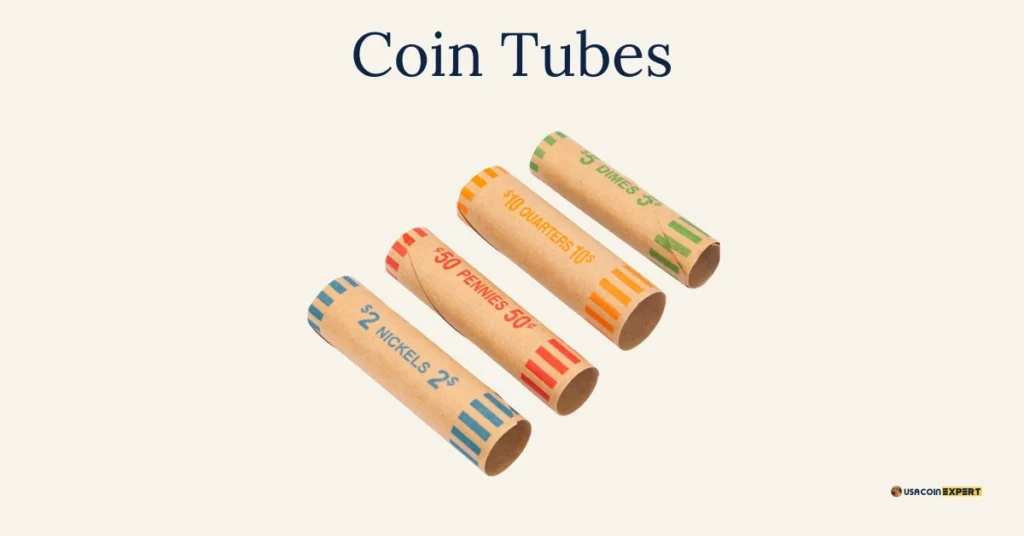
Coin tubes are cylindrical containers designed to store multiple coins of the same size. They’re often used for stacking and storing bulk coins efficiently.
- Why It’s Great:
- Space-saving and stackable.
- Protects coins from dirt, scratches, and light handling.
- Affordable for bulk collections.
- Best For:
- Rolls of Wheat Pennies: Ideal for storing large quantities.
- Bullion Coins (e.g., Krugerrands): Simplifies bulk bullion storage.
- Uncirculated Coins: Keeps mint-condition coins safe.
7. Slab Holders
Slab holders are designed for coins that have been professionally graded and encased by certification services like PCGS or NGC. These holders provide additional protection and organization for slabbed coins.
- Why It’s Great:
- Protects certified coins from scratches and tampering.
- Keeps graded coins organized and easy to access.
- Perfect for showcasing high-value investments.
- Best For:
- Graded Morgan or Peace Dollars: Secure your certified coins.
- Rare Key Date Coins: Preserve the value of scarce coins like the 1909-S VDB Penny.
- Modern Commemorative Coins: Store professionally graded examples.
8. Drawer Cabinets
Drawer cabinets are elegant storage solutions with multiple compartments, often made of wood or metal. They provide safe and stylish storage for individual coins.
- Why It’s Great:
- Combines aesthetics with functionality.
- Ideal for organizing collections by type or theme.
- Keeps coins protected from environmental damage.
- Best For:
- Medieval Coins: Perfect for delicate, historical pieces.
- Roman and Greek Coins: Showcase ancient coins beautifully.
- Premium Bullion or Proof Coins: Display high-value items in style.
9. Coin Chests
Coin chests are antique-style storage boxes with compartments or trays for coins. These chests add a decorative touch to your collection while offering robust storage.
- Why It’s Great:
- Adds a vintage, decorative element to storage.
- Durable for long-term protection.
- Ideal for premium collections or heirloom pieces.
- Best For:
- Historical Coins (e.g., Colonial Currency): Perfect for showcasing rare finds.
- Rare Gold Coins: Securely stores valuable pieces.
- Commemorative Sets: Keeps sets organized and protected.
10. Vault Boxes or Safe Deposit Boxes
Vault boxes are fireproof and waterproof containers, while safe deposit boxes are secure storage options available at banks.
- Why It’s Great:
- Offers the highest level of protection against theft, fire, and water damage.
- Ensures long-term safety for irreplaceable coins.
- Suitable for large or high-value collections.
- Best For:
- Rare Gold and Silver Coins: Safeguard your most valuable investments.
- Key Date Coins (e.g., 1794 Flowing Hair Dollar): Protect one-of-a-kind pieces.
- High-Value Ancient Coins: Secure coins with historical significance.
Pro Tips for Storing Your Coins Safely
Proper storage solutions are crucial, but the way you handle and maintain your coins also plays a significant role in their preservation. Follow these expert tips to ensure your collection remains in pristine condition for years to come.
1. Use Gloves or Clean Hands When Handling Coins
Handling coins directly with bare hands can transfer oils, dirt, and moisture onto their surface, potentially causing stains or corrosion.
- Why It Matters: Natural oils from your skin can leave fingerprints or cause discoloration over time.
- Pro Tip: Always use soft cotton gloves or wash your hands thoroughly and dry them completely before touching your coins.
2. Add Silica Gel Packs to Absorb Moisture
Humidity is one of the biggest threats to coin preservation, as it can accelerate tarnishing and corrosion.
- Why It Matters: Excess moisture in storage spaces can damage coins, especially those made of silver, copper, or other reactive metals.
- Pro Tip: Place silica gel packs in your storage containers, drawers, or display cases to maintain a dry environment. Replace them periodically to ensure effectiveness.
3. Regularly Inspect Stored Coins for Signs of Damage
Even with proper storage, it’s important to check your coins periodically to ensure they remain in good condition.
- Why It Matters: Early detection of issues like tarnish, corrosion, or environmental damage can prevent further deterioration.
- Pro Tip: Schedule regular inspections, looking for signs of discoloration, residue, or scratches. If you notice any issues, clean or reseal the coins using safe methods or consult a professional.
4. Avoid Using Paper Envelopes or Harmful Materials
Some materials, such as acidic paper envelopes or PVC-based plastics, can emit harmful chemicals that react with coins over time.
- Why It Matters: Acids and chemicals can cause unsightly discoloration, residue, or even pitting on the coin’s surface.
- Pro Tip: Use archival-quality, acid-free materials like Mylar flips or PVC-free plastic holders to ensure long-term safety.
Bonus Tips:
- Control the Environment: Store coins in a cool, dry location with stable temperature and humidity levels. Avoid storing coins in basements or attics, where temperature and humidity can fluctuate.
- Minimize Handling: Only handle coins when necessary, and hold them by the edges to avoid contact with the surface.
- Label Properly: Label your storage clearly to avoid unnecessary handling while searching for specific coins.
Conclusion
Protecting and preserving your coin collection is not just about keeping it organized; it’s about ensuring its value and beauty endure for generations. Coins are more than just pieces of metal—they carry history, culture, and sometimes even personal memories. Proper storage and handling are essential to maintaining their appeal and worth.
By choosing the right storage solution from the top 10 options we’ve discussed—whether it’s coin albums for easy display, Air-Tite holders for maximum protection, or vault boxes for rare treasures—you can safeguard your coins from tarnish, corrosion, and damage. Combine this with smart practices like using gloves, controlling humidity, and avoiding harmful materials to ensure your collection stays in pristine condition.
Your investment in proper storage today ensures that your coins will retain their value and charm tomorrow. Start exploring the best storage solutions and apply these tips to protect your collection, so you can enjoy its legacy for years to come.
FAQ: Frequently Asked Questions About Coin Storage
1. What is the safest way to store valuable coins?
The safest way to store valuable coins is to use airtight holders or graded slabs. These provide superior protection against air, moisture, and handling damage. For added security, store high-value coins in a fireproof and waterproof safe or a bank’s safe deposit box.
2. Can I store coins in regular plastic holders?
It depends on the type of plastic. Avoid PVC-based holders, as they release harmful chemicals over time that can damage coins. Instead, opt for archival-quality, PVC-free plastics such as Mylar, which are safe for long-term storage.
3. How do I prevent coins from tarnishing?
To prevent tarnishing:
Store coins in airtight capsules or non-PVC flips.
Add silica gel packs to absorb excess moisture in storage spaces.
Keep coins in a cool, dry, and temperature-controlled environment, avoiding exposure to air and humidity.
4. Is it okay to clean my coins before storing them?
Generally, cleaning coins is not recommended, as it can damage their surface and reduce their value. If a coin is dirty, consult a professional conservator or use a gentle method specifically designed for coins. Always avoid abrasive materials or harsh chemicals.
5. Can I store coins in paper envelopes?
No, standard paper envelopes are not ideal for storing coins. They may contain acids that can react with the coin’s surface over time, causing discoloration or damage. Instead, use acid-free coin envelopes or Mylar flips for safe storage.
6. How should I handle coins to avoid damaging them?
Always handle coins with clean, dry hands or wear soft cotton gloves. Hold coins by the edges to avoid touching the surface, as oils from your skin can cause stains or corrosion.
7. What’s the best way to store bulk coins?
For bulk coins:
Use coin tubes for uniform sizes, such as pennies, nickels, or bullion coins.
Store them in a climate-controlled environment to prevent damage.
For mixed coins, consider 2×2 holders or coin drawers for organization and protection.
8. How often should I inspect my coin collection?
It’s a good idea to inspect your coins at least once or twice a year to check for signs of tarnish, corrosion, or damage. During inspections, ensure the storage environment remains stable and that any silica gel packs or other moisture absorbers are still effective.
9. Can coins be damaged by light?
Yes, exposure to direct sunlight or strong artificial light can cause toning (discoloration) on coins over time. Always store coins in opaque containers or dark storage spaces to prevent light damage.
10. How do I organize my coin collection?
You can organize your collection by:
Type: Separate coins by denomination (e.g., pennies, quarters).
Date or Series: Arrange coins chronologically or by mint mark.
Value: Store rare or high-value coins in more secure and protective storage.
Use labeled coin albums, folders, or cases for clear organization.



